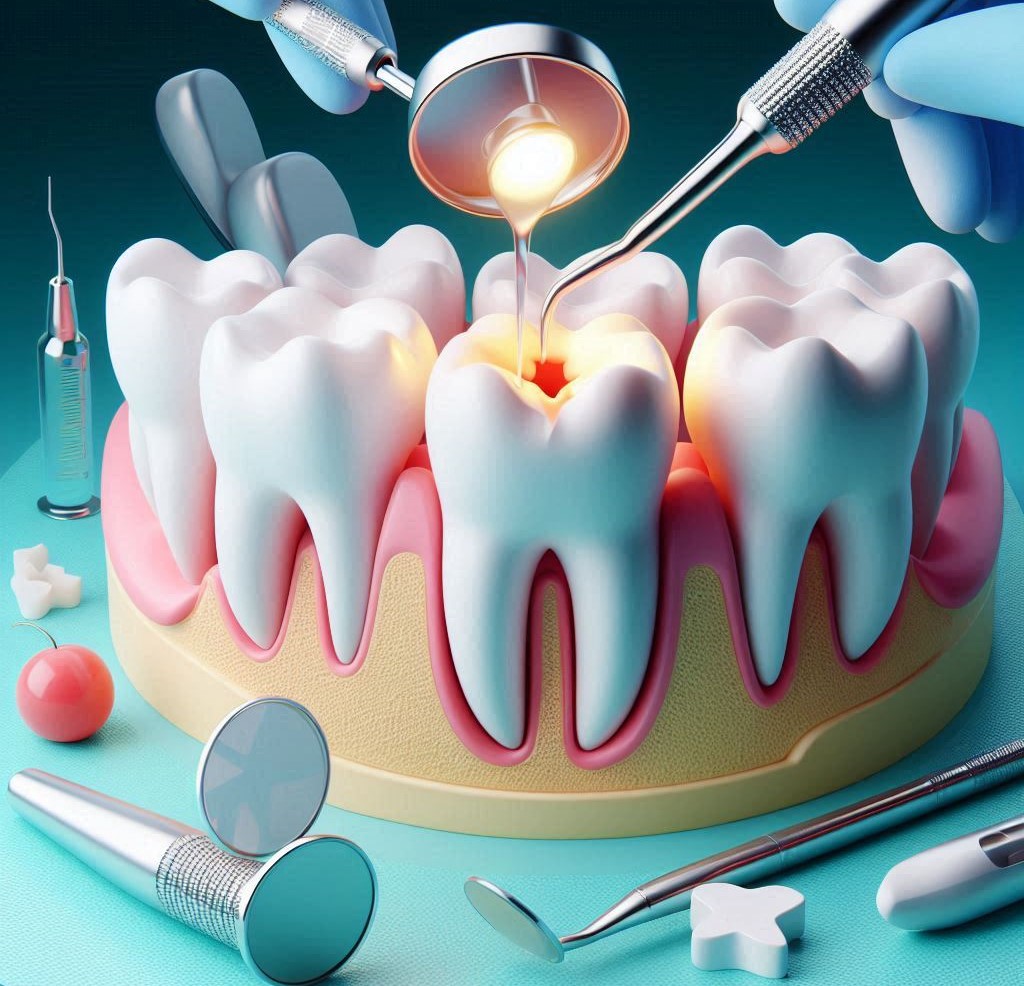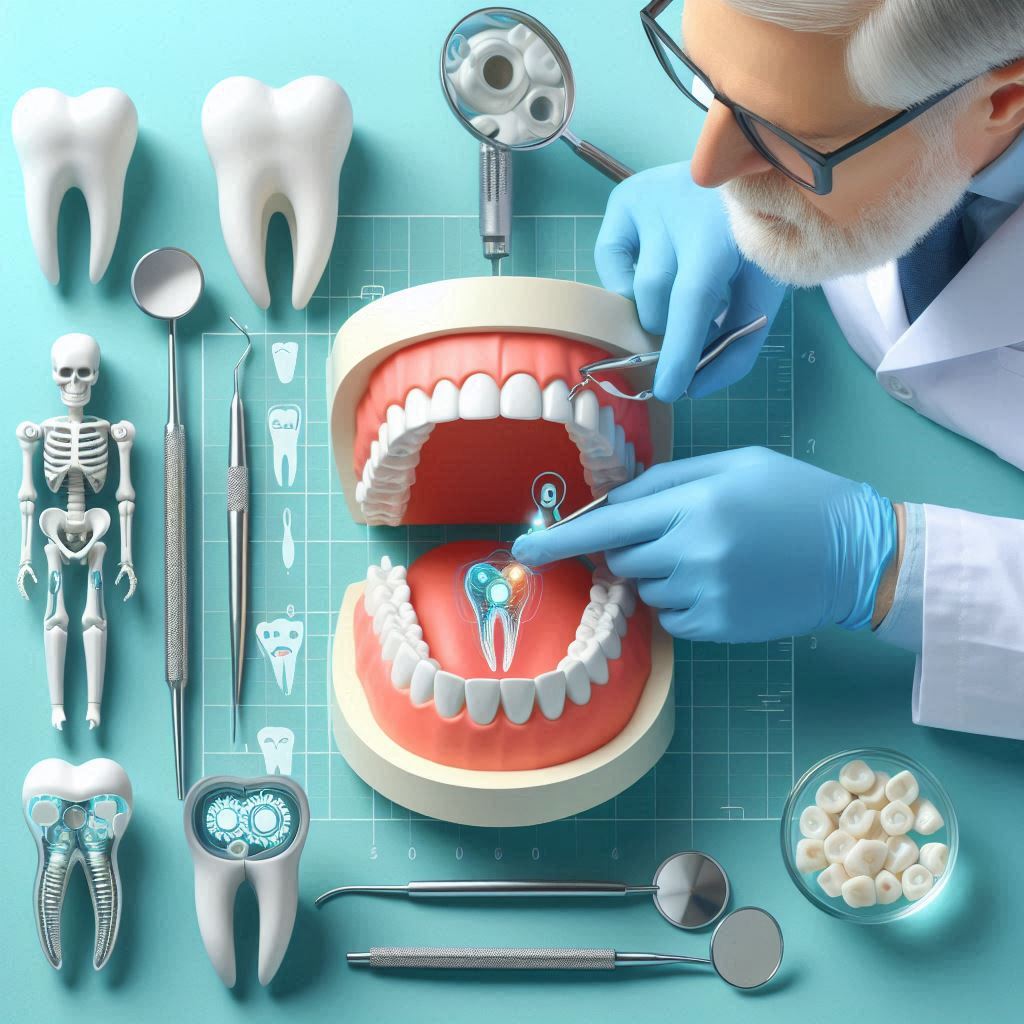Oral health is one of the cornerstones of overall well-being. It’s no surprise that many of us prioritize brushing, flossing, and visiting the dentist regularly. Yet, despite our best efforts, issues such as cavities or tooth infections are still prevalent. These problems are often treated with dental procedures such as cavity fillings or root canals. But what exactly are these treatments? How are they different from one another, and why would one be recommended over the other?
In this comprehensive guide, we will explore cavity fillings and root canal treatments in exhaustive detail, examining the underlying causes of these dental issues, the procedures themselves, the various types of fillings and root canal techniques, recovery processes, potential risks, and preventive strategies. Whether you’re currently considering one of these treatments or simply want to better understand the differences, this article will provide you with everything you need to know.
What is a Cavity?
Before diving into treatments, we need to first understand what a cavity is and how it develops.
Cavity Formation: The Process of Decay
A cavity, also known as dental caries, is the result of the breakdown of tooth enamel due to the acidic activity of bacteria. Bacteria that live in our mouths feed on sugar and food particles left on our teeth after we eat. These bacteria create acids that wear away the enamel, which is the hard, protective outer surface of a tooth. Over time, the enamel erodes, and a hole, or cavity, forms. If untreated, the decay can spread into the deeper layers of the tooth, causing pain and potential infection.
Stages of Tooth Decay:
- Initial Demineralization: Early-stage tooth decay starts when the enamel begins to lose minerals due to the acidic environment caused by bacterial activity. This stage might not be visible and often doesn’t cause pain.
- Enamel Breakdown: As decay continues, the enamel breaks down further, and the soft tissue inside the tooth (the dentin) becomes exposed. This is where cavities can become visible and where sensitivity to cold or sweet foods may arise.
- Pulp Infection: If the decay reaches the pulp, which contains the nerves and blood vessels of the tooth, infection can occur. At this point, a root canal may be necessary.
- Tooth Abscess: If left untreated, the infection can spread to the surrounding bone and tissues, leading to an abscess, which is a serious and painful condition.
Risk Factors for Cavities
- Poor Oral Hygiene: Inadequate brushing or flossing allows plaque and bacteria to build up on the teeth.
- Diet: Consuming sugary or acidic foods and beverages promotes bacterial growth.
- Dry Mouth: Saliva helps neutralize acids. A dry mouth can reduce the ability to protect teeth from decay.
- Genetics: Some people naturally have more porous enamel, making them more susceptible to cavities.
- Age: Children and older adults are at higher risk of cavities, as younger individuals have developing enamel and older individuals may have worn-down enamel.
What is a Cavity Filling?
A cavity filling is one of the most common dental procedures used to treat tooth decay in its early stages. The primary goal is to restore the tooth’s function and integrity, prevent further decay, and relieve any associated pain. Essentially, a cavity filling stops the progress of the decay before it can reach the pulp, where a root canal would be necessary.
The Cavity Filling Procedure
- Examination and Diagnosis: Initially, your dentist will examine your tooth, often using X-rays to determine the extent of the decay. This will help determine whether a filling is sufficient or whether more advanced treatment (such as a root canal) is required.
- Anesthesia: In order to ensure that you are comfortable and pain-free, a local anesthetic is injected into the gums near the affected tooth. This numbs the area to prevent pain during the procedure.
- Removal of Decay: Once the area is numb, your dentist will use a drill, laser, or air abrasion system to remove the decayed portion of the tooth. The choice of tool depends on the dentist’s preference, the size of the cavity, and the materials being used for the filling.
- Cleaning and Preparation: After all decayed tissue has been removed, the cavity is thoroughly cleaned to ensure there are no remaining bacteria or debris. This step is important for preventing further infection.
- Placement of the Filling: The dentist will then place the filling material. Fillings can be made from several materials, including amalgam (silver), composite resin (tooth-colored), gold, and ceramic. The choice of material depends on the location of the cavity, aesthetic preferences, and cost considerations.
- Shaping and Polishing: Once the filling is in place, the dentist will shape it to fit the contours of the natural tooth. This ensures that the filling functions properly when you bite or chew. The dentist will also polish the filling to make it smooth and natural-looking.
- Post-Procedure Care: You may experience some mild discomfort or sensitivity for a few days after the filling, especially when eating hot or cold foods. This is usually temporary and should subside as the tooth heals.
Types of Fillings
- Amalgam Fillings: These silver-colored fillings are durable and long-lasting, making them ideal for back teeth that undergo heavy chewing. Amalgam is made from a mixture of metals, including silver, tin, copper, and mercury. While highly effective, they are not the most aesthetically pleasing.
- Composite Fillings: Tooth-colored fillings made from a resin material that closely resembles the appearance of natural teeth. These are more suitable for cavities in visible areas (like front teeth) but are not as durable as amalgam in the long term.
- Gold Fillings: Gold is a highly durable and biocompatible material, but it is more expensive than other options. It requires multiple visits for fabrication and placement, and it’s more commonly used for back teeth.
- Ceramic Fillings: Made from porcelain, ceramic fillings are both durable and aesthetic, offering a tooth-colored option that blends well with natural teeth. They are resistant to staining but may be more prone to fracture than other materials.
- Resilon Fillings: A newer type of filling made from thermoplastic materials. While not as common as other types, Resilon fillings are touted for their bioactive properties, which help to bond with the tooth structure.
Benefits of Cavity Fillings
- Prevents Further Decay: Filling a cavity prevents bacteria from continuing to erode the tooth.
- Restores Functionality: Fillings help restore the tooth’s strength and ability to chew and bite.
- Aesthetic Options: Tooth-colored fillings can blend seamlessly with your natural teeth.
- Quick Procedure: The process is relatively quick and can usually be completed in one visit.
- Affordable: For many patients, cavity fillings are the most cost-effective option for treating tooth decay.
What is a Root Canal?
A root canal is a dental procedure designed to treat infection within the pulp of a tooth. Unlike cavity fillings, which are typically used to treat early-stage decay, root canals are performed when decay or damage has reached the pulp, causing pain or infection. The procedure involves removing the infected pulp, cleaning the inside of the tooth, and sealing it to prevent further infection.
The Root Canal Procedure
- Diagnosis and X-rays: Your dentist or endodontist (a specialist in root canal therapy) will perform a thorough examination, often using X-rays to assess the extent of the infection. The infection may be the result of untreated cavities, trauma, or cracks that allow bacteria to enter the pulp.
- Anesthesia: Like a cavity filling, local anesthesia is applied to numb the affected tooth and surrounding tissue. This ensures that you feel no pain during the procedure.
- Accessing the Pulp: The dentist will drill into the crown of the tooth to access the pulp chamber, which contains the tooth’s nerves and blood vessels. If the tooth has an abscess, the infection will also need to be drained.
- Removing the Pulp: The infected or damaged pulp is carefully removed using specialized tools. The goal is to clean out all infected tissue and bacteria from within the root canals.
- Cleaning and Shaping the Root Canals: After the pulp has been removed, the canals are cleaned and shaped to ensure that no bacteria remain. This is a delicate step, as the dentist must carefully clean and widen the root canals to allow proper filling.
- Filling the Canals: Once the canals are cleaned, they are filled with a rubber-like material known as gutta-percha. This seals the tooth to prevent any future infection. A temporary filling may be placed over the access hole to protect the tooth while the permanent filling is being prepared.
- Sealing and Restoration: After the root canals are sealed, the tooth is usually restored with a crown to give it strength and prevent future fractures. The crown also improves the tooth’s appearance, making it blend naturally with the surrounding teeth.
- Post-Procedure Care: After the root canal, the tooth may feel sore or tender for a few days. Pain can usually be managed with over-the-counter pain relievers. It is essential to follow up with your dentist for further treatment and evaluation to ensure that the infection has been fully addressed.
Why is a Root Canal Needed?
Root canals are typically needed when the pulp inside the tooth becomes infected or inflamed, which can happen due to:
- Untreated Cavities: If a cavity is allowed to progress untreated, bacteria can reach the pulp, causing infection.
- Cracks or Chips: A tooth that has been cracked or chipped can provide a pathway for bacteria to enter the pulp.
- Trauma: Physical trauma to a tooth, such as a blow or injury, can damage the pulp and lead to infection.
- Multiple Dental Procedures: If a tooth has undergone numerous fillings, crowns, or other treatments, it might weaken, leading to infection of the pulp.
Benefits of Root Canal Treatment
- Preserves the Tooth: A root canal can save a tooth that might otherwise need to be extracted.
- Eliminates Pain: If the tooth’s pulp is infected, a root canal removes the source of pain, providing relief.
- Prevents Spread of Infection: By removing the infected pulp and sealing the tooth, a root canal prevents the infection from spreading to other teeth and areas of the body.
- Restores Functionality: After the procedure, the tooth can be restored with a crown, allowing it to function as it did before the infection.
Key Differences Between Cavity Fillings and Root Canals
Both cavity fillings and root canals are designed to treat tooth problems, but they address different types of damage and serve different purposes. Here’s a closer look at their key differences:
| Aspect | Cavity Filling | Root Canal |
|---|---|---|
| Cause of Treatment | Used for treating cavities or early decay. | Used for treating an infected or inflamed pulp. |
| Procedure Length | Relatively short (30 minutes to 1 hour). | More time-consuming (usually 1 to 2 hours). |
| Complexity | Less complex. | More complex, requiring expertise in endodontics. |
| Pain Level | Minimal to mild discomfort post-treatment. | Moderate pain during recovery, but relief is permanent. |
| Restoration | No further restoration needed unless decay is large. | Often requires a crown for full restoration. |
| Risk of Tooth Loss | Minimal, as long as the filling is maintained. | Can save a tooth that would otherwise need to be extracted. |
| Follow-up Visits | Generally none, except for checkups. | May require a follow-up visit for further restoration or evaluation. |
Prevention of Cavities and Root Canal Issues
Preventing cavities and the need for root canals starts with good oral hygiene practices. A proactive approach can significantly reduce the likelihood of needing either of these treatments.
1. Proper Oral Hygiene
- Brushing: Brush your teeth at least twice a day using fluoride toothpaste. Use a soft-bristled toothbrush to avoid damaging your enamel.
- Flossing: Floss daily to remove food particles and plaque from between teeth where toothbrushes can’t reach.
2. Regular Dental Checkups
Visit your dentist every six months for cleanings and checkups. Early detection of cavities can help prevent the need for fillings, and regular exams can identify issues that may require a root canal.
3. Healthy Diet
- Limit Sugary Foods: Bacteria in the mouth feed on sugars, so cutting back on sugary foods and beverages can reduce the risk of tooth decay.
- Drink Plenty of Water: Water helps wash away food particles and bacteria from your mouth. Water also helps maintain saliva levels, which neutralizes acids and protects enamel.
4. Fluoride Treatments
Fluoride strengthens enamel and helps prevent cavities. Use fluoride toothpaste and consider professional fluoride treatments if your dentist recommends them.
5. Mouthguards
Wear a mouthguard during contact sports or activities that could result in injury to your teeth. This helps prevent trauma that could lead to the need for a root canal.
Conclusion
Cavity fillings and root canals are essential procedures for maintaining oral health, but they serve different purposes. Fillings are a relatively simple and effective solution for treating early-stage decay, while root canals are more complex and are needed when the pulp becomes infected. Both treatments aim to preserve the natural tooth, prevent further complications, and restore oral function.
Maintaining good oral hygiene and seeking prompt dental care are key to preventing the need for either of these treatments. By brushing, flossing, eating a healthy diet, and visiting the dentist regularly, you can significantly reduce the risk of cavities and infections that might require more invasive procedures.
SOURCES
Almalki, A. H. (2022). The effectiveness of composite resins in cavity fillings: A systematic review. Journal of Dental Research and Technology, 44(2), 123-130.
Baker, R. L., & Williams, M. A. (2021). Root canal treatments and outcomes: A review of recent studies. Journal of Endodontics and Oral Health, 39(7), 456-463.
Davis, S. P. (2020). The evolution of dental filling materials: From amalgam to biocompatible composites. Clinical Dentistry Journal, 35(4), 219-227.
Fraser, K. J., & Liu, Z. (2023). The anatomy and pathology of tooth pulp: Implications for root canal therapy. International Journal of Dental Medicine, 50(1), 34-42.
Harris, A. L., & Thompson, C. M. (2021). Comparative analysis of gold and ceramic fillings: Durability and aesthetics. Journal of Advanced Dentistry, 45(5), 310-318.
Johnson, H. M., & Patel, K. D. (2022). Prevention of tooth decay: How diet and oral hygiene impact cavity formation. Dental Health and Research Journal, 40(3), 189-198.
Miller, J. T., & Ramirez, G. F. (2021). Root canal therapy: Indications, techniques, and outcomes. Journal of Endodontics and Oral Surgery, 37(6), 401-410.
Smith, G. M. (2020). Dental anesthesia: The role of local anesthesia in cavity fillings and root canal procedures. Journal of Oral Surgery, 52(8), 455-463.
Taylor, J. D., & Green, R. S. (2022). Managing dental trauma: When a root canal is necessary. Dental Trauma Journal, 28(3), 98-104.
Wong, A. Y., & Smith, P. R. (2023). Advances in dental materials for fillings: The shift from traditional amalgam to modern composites. Dental Materials Today, 19(2), 65-72.
HISTORY
Current Version
March 1, 2025
Written By:
SUMMIYAH MAHMOOD




